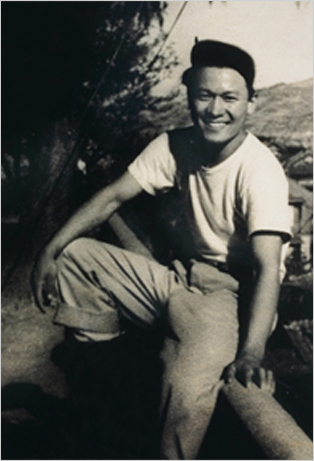 Did you know that even after Korea’s liberation from Japanese colonial rule, the independence movement was carried out? As far as we know, the independence movement did not end in 1945 and there are still independence movements that we can join in. This independence movement after 1945 focused on protecting Dokdo from falling under Japanese rule. Even after the liberation of Korea, the Japanese attempted to occupy Korea’s surrounding islands in secret. The Japanese occupation, in particular, Japan used confrontation to occupy and abuse the country for 35 years, during this time they dominated the whole land. Even far before Japanese occupation, since the Three Kingdoms Period, Japan had been trying to utilize Dokdo island for their own sake. Though the land of the Korean peninsula and Dokdo and Ulleung Island was returned to the people and to the Korean government following deoccupation, there are still many efforts by Japan to make incremental progress toward the Dokdo island.
Did you know that even after Korea’s liberation from Japanese colonial rule, the independence movement was carried out? As far as we know, the independence movement did not end in 1945 and there are still independence movements that we can join in. This independence movement after 1945 focused on protecting Dokdo from falling under Japanese rule. Even after the liberation of Korea, the Japanese attempted to occupy Korea’s surrounding islands in secret. The Japanese occupation, in particular, Japan used confrontation to occupy and abuse the country for 35 years, during this time they dominated the whole land. Even far before Japanese occupation, since the Three Kingdoms Period, Japan had been trying to utilize Dokdo island for their own sake. Though the land of the Korean peninsula and Dokdo and Ulleung Island was returned to the people and to the Korean government following deoccupation, there are still many efforts by Japan to make incremental progress toward the Dokdo island.
After the Korean war, several veterans and locals joined together to prevent militia movements coming toward Dokdo. Hong Soon-chil was the leader of this righteous movement. Captain Hong Soon-chil was born in Ulleung-gun, Gyeongsangbuk-do on January 23, 1929. He joined the Korean Army after the Korean War in 1950 and advanced to Cheongjin, North Hamgyeong Province, but was discharged from the military in July 1952 after suffering a battle wound near Wonsan. After returning to his hometown, Ulleung Island, he saw ‘Shimane Prefecture, Oki, Takeshima’, found lying is a signpost near the front of the island. In 1953, a Japanese fisheries experimental ship wrote ‘Shimane Takeshima’ on wooden poles in an attempt to make Dokdo as its territory. Hong had witnessed the Japanese occupation last 35 years before the Korean War, he immediately recognized the crisis shortly after returning home, then he organized the Dokdo Volunteer Forces. The organization consisted of 2 combat squadrons of 15 men each, 3 Ulleungdo supply liaisons, 5 reserves, and 5 supply ship crews, adding to 45 volunteers. All except three of them were soldiers who served in the Korean War, and the Dokdo volunteer guards that Hong organized. Dokdo Volunteer Forces’ equipment included a light machine gun and 2-3 medium machine gun, grenades and rifles – two guns, a pistol, 50 rounds, and a half a ton boat.
The patrol operations in cooperation with the police contributed and effectively ruled the waters near Dokdo and the Republic of Korea. On April 20, 1953 after organizing the volunteer Forces, they arrived and started a security guard on Dokdo. In June 1953, the Dokdo Volunteer Forces took measures to return a training ship for a Japanese fisheries high school approaching Dokdo, and on July 23, 1953, it discovered the Japanese Maritime Security Administration patrol ship PS9, which appeared on the coast of Dokdo, and fought for the first time in a firefight and repelled it. In the same month, the National Assembly dispatched police officers belonging to the Ulleung Police Station to Dokdo as guards to reside. However, there were only five people on the guard duty, and the residence for residents relied on the Dokdo garrison, and the only equipment prepared was a Calvin rifle, some food, soy sauce, soybean paste, and a few boxes of soju. On August 5, 1953, to reiterate that Dokdo is Korean territory, the Forces engraved ‘The decree’ on the rock wall.
The true value of the Dokdo Volunteer Forces also appeared in the battle that defeated the Japanese patrol ship which approached Dokdo in August 1954. In November of the same year, the Forces fought a fierce battle with three Japanese patrol ships and an aircraft that invaded the Dokdo area, killing a dozen Japanese soldiers. It was a remarkable battle that defeated the mighty Japanese Navy and established itself while guarding the surroundings. On December 30, 1956, the Dokdo Voluntary Forces handed over all security and equipment to the police, ending its official garrison activities. Nine of the guards were specially appointed and appointed as police officers at the Ulleung Police Station, and continued to work on the Dokdo security service, continuing the ranks of the Dokdo guards. In 1996, the government ordered the deceased leader of the Dokdo Medical Guard, Hong Soon-chil, the National Veteran’s National Veteran’s Chieftain of National Veterans Affairs, and the National Veterans’ Liberation Medal of Liberation to other members of the Dokdo garrison. In the conflict, the Dokdo independence movement was strengthened and these men made huge contributions in keeping Dokdo safe after the Korean war.
Written by: Kamilah Dreux
Originally from Washington D.C , Current 4th year university student, Candidate for a Bachelor of Arts in Korean Language Flagship and Korean History at the University of Hawai’i at Mānoa, Exchange student at Korea University and Intern at VANK (Voluntary Agency Network of Korea).